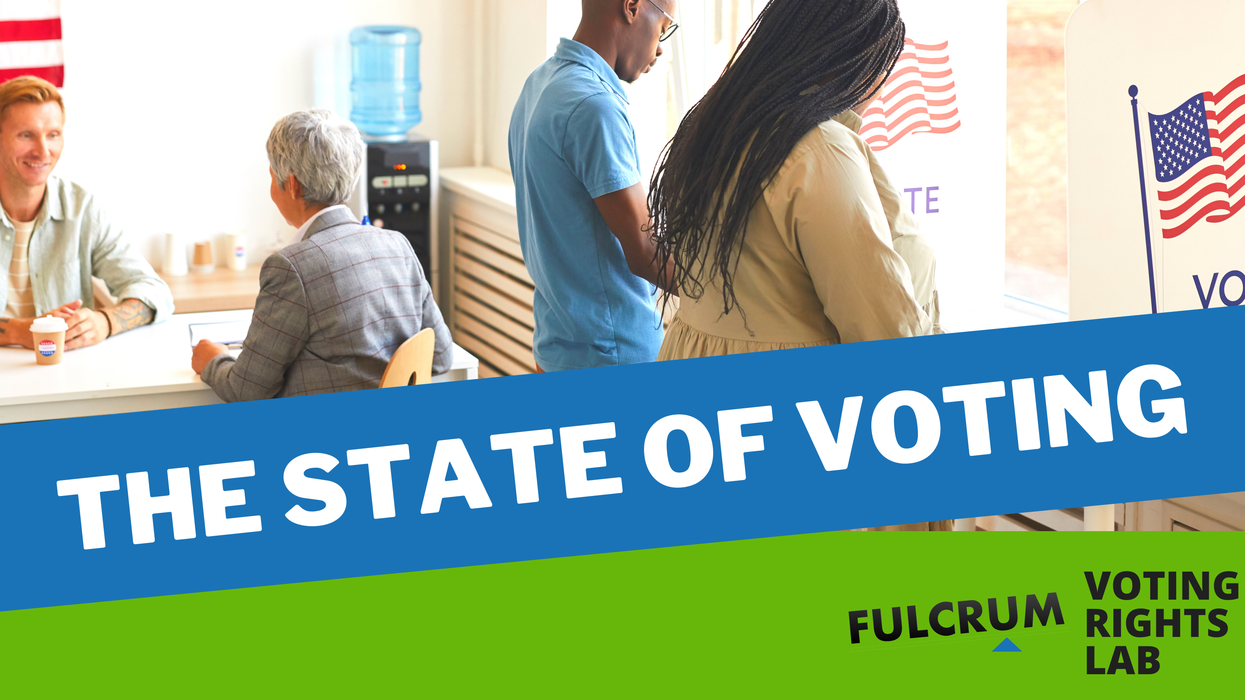This weekly update summarizing legislative activity affecting voting and elections is powered by the Voting Rights Lab. Sign up for VRL’s weekly newsletter here.
The Voting Rights Lab is tracking 2,217 bills so far this session, with 584 bills that tighten voter access or election administration and 1,062 bills that expand the rules. The rest are neutral, mixed or unclear in their impact.
The Ohio House of Representatives’ Government Oversight Committee on Monday approved a bill that would restrict mail voting and make the state’s voter ID law more stringent.
Last week, New York enacted a bill that will ensure eligible votes cast at an incorrect polling place are still counted. And Missouri lawmakers prefiled legislation to give voters an opportunity to correct errors on their mail ballot envelopes.
Looking ahead: Ohio H.B. 294, the restrictive bill that moved out of committee this morning, may be heard on the House floor tomorrow, followed by a concurrence vote in the Senate either tomorrow or Wednesday. In the aftermath of the long lines and lower turnout in this year’s runoff election, Georgia officials are discussing reforms to 2021’s controversial S.B. 202.
Here are the details:
New York enacts legislation to ensure eligible votes cast at the wrong polling place are counted. On Dec. 6, Gov. Kathy Hochul signed S.B. 284, which ensures that if a voter casts a provisional ballot (called an “affidavit ballot” in New York) at the wrong polling place, all votes they were eligible to cast will count, so long as the person voted in the correct county and state Assembly district. Under the previous law, these ballots would have been rejected.
Ohio moves legislation to restrict mail voting and make the state voter ID law more stringent. Earlier today, the Ohio House of Representatives’ Government Oversight Committee voted out a substitute for H.B. 294, an omnibus bill that would, among other provisions, restrict acceptable forms of voter identification, limit the secretary of state’s authority, prohibit prepaid postage for mail ballots, and limit the number of drop boxes for mail ballots to one per county. The next step for this bill is a vote on the House floor, which could happen tomorrow.
Missouri lawmakers prefile a bill to give voters an opportunity to correct errors on their mail ballot envelopes. Under Missouri law, mail ballots are rejected if the ballot envelope is not notarized or is missing a signature. S.B. 210 would ensure that, prior to rejecting a ballot, county officials contact the voter and give them an opportunity to correct the problem so their ballot may be counted. Most states have this type of “cure” process; Missouri is currently one of 19 states without a statewide cure process.
After long lines and lower turnout, Georgia officials eye additional runoff reforms. Last year’s S.B. 202 moved runoff elections forward by a month, cutting the number of required days of early voting by over two-thirds. In the first election since the bill’s passage, turnout was down over 20 percent as compared to the January 2021 runoff. These changes contributed to hours-long lines and thousands of mail ballots being sent too late for voters to return them by the required deadline. Following last week’s election, Secretary of State Brad Raffensperger expressed openness to several reforms for future election cycles, including eliminating runoffs in favor of ranked-choice voting; lowering the threshold for triggering runoff elections; and requiring that counties open more early voting locations. One lawmaker announced plans to prefile a bill that would extend the runoff period.




















